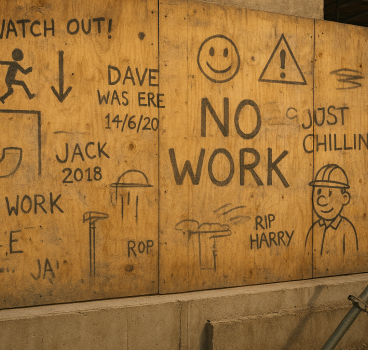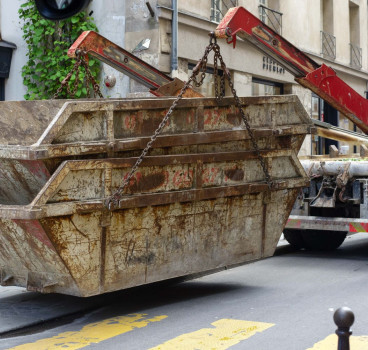Why stonemasons were once considered a secret society
Walk past a medieval cathedral, a castle, or even a centuries-old town hall and you’re looking at the work of stonemasons - the master builders of the Middle Ages. These skilled craftsmen designed and carved the blocks that held up Gothic cathedrals, fortified castles and even bridges and city walls. Yet in their own time, stonemasons weren’t seen as just another trade. They were whispered about as something closer to a secret society. Their guilds operated behind closed doors, their symbols were mysterious and their rituals baffled outsiders. They commanded enormous respect, but also inspired suspicion. So why were stonemasons considered such a secretive order and how did this reputation evolve into modern-day Freemasonry?
In medieval Europe, knowledge was tightly guarded. Most people were illiterate and the sciences of mathematics, engineering and astronomy were the preserve of a small elite. Yet stonemasons possessed practical mastery of geometry and structural design.
They knew how to calculate forces in arches, how to position buttresses and how to align a cathedral with the path of the sun. These were skills not written in textbooks, but passed down orally through apprenticeships. Protecting this expertise was essential - it ensured that only trained masons could undertake such monumental work.
In an era where buildings like Notre-Dame de Paris or York Minster were the skyscrapers of their age, this knowledge gave masons extraordinary power. Secrecy wasn’t just a tradition—it was survival.
Lodges, guilds and the brotherhood
Masons organised themselves into guilds: professional associations that acted as trade unions, training schools and social clubs rolled into one. Each cathedral or major building site typically had a lodge - a dedicated meeting house where masons ate, worked on designs, and held private gatherings.
Guilds enforced strict hierarchies where apprentices trained under a master for years, learning the basics of shaping and setting stone. Journeymen (from the French journée, meaning “day’s work”) travelled from site to site, working for wages. Masters achieved the highest rank, often taking on the role of architect, overseeing construction of entire buildings.
Entry into these ranks wasn’t automatic. Candidates often had to prove their skill and loyalty, sometimes through oaths taken on religious relics. Once initiated, they belonged to a brotherhood that transcended borders. For outsiders, these oaths and rituals looked mysterious. Combined with the masons’ mobility, wealth and connections, it gave them an aura of being a society apart from ordinary workers.
The strange and secret symbols of masons
Masons left their mark on history in more ways than one. Many carved small mason’s marks into the stones they worked on - geometric signs or initials that identified their craftsmanship. To modern eyes, these symbols resemble runes or coded language.
In addition to these marks, masons also used a system of secret signs, handshakes, and passwords to identify themselves to other guild members while travelling. This helped ensure they weren’t cheated or excluded in foreign towns.
The tools of the trade also carried symbolic meaning. The square, for example, represented fairness and morality. The compass symbolised balance and restraint and the plumb line stood for uprightness and integrity. These metaphors would later be borrowed by Freemasons, turning practical building tools into symbols of philosophy and ethics.
Why all the secrecy?
Several factors explain why stonemasons developed a reputation as a secretive society. Their building methods were valuable trade secrets. By keeping them within the guild, masons ensured their skills remained scarce and highly paid. As travelling workers, masons also needed a way to prove their identity in distant towns. Signs, rituals and codes were an early form of professional certification.
Furthermore, while they worked for kings and bishops, masons often answered to their guilds, not rulers. Their autonomy could make authorities uneasy. Cloaking their trade in ritual and symbolism also helped lift masons above ordinary labourers. They were not just workers - they were guardians of sacred knowledge.
This secrecy sometimes backfired. Rumours spread that masons were involved in conspiracies or possessed hidden wisdom connected to alchemy, astrology, or even heresy. The reality was more practical, but the mystique stuck.
Famous examples of Mason Lodges in action
Some of the most famous buildings in Europe bear the fingerprints of these secretive guilds:
- Notre-Dame Cathedral, Paris – Construction began in 1163, employing generations of masons over nearly two centuries. Many left distinctive mason’s marks in the stonework.
- York Minster, England – The York masons’ lodge was one of the most influential in Britain, setting standards for Gothic building across the north.
- Cologne Cathedral, Germany – Work stretched over 600 years, with masons carefully passing down plans and measurements to keep the design consistent.
- Rosslyn Chapel, Scotland – Built in the 15th century, it became a centre of speculation about secret mason symbolism, later popularised in The Da Vinci Code.
Each of these sites wasn’t just a workplace but a living hub of knowledge exchange, guarded by ritual and custom.
From stonemasons to freemasons
By the 16th and 17th centuries, cathedral building slowed as Gothic architecture fell out of fashion. But the lodges didn’t disappear. Instead, they transformed. Some lodges began admitting “speculative” masons - men who weren’t builders, but were interested in the symbolism, rituals and camaraderie of the guilds. Philosophers, scholars and eventually aristocrats joined, turning practical stonemasonry traditions into moral allegories.
This was the birth of Freemasonry. The old tools of the trade became metaphors - building a cathedral was reimagined as building one’s character and the lodge became a place for philosophical discussion. By the 18th century, Freemasonry had spread across Europe and America, attracting politicians, scientists and revolutionaries. What began as a way to keep stonemasons’ skills exclusive became one of the most famous secret societies in history.
The legacy of the “Secret Society of Builders”
Today, the secrecy of medieval stonemasons might seem unnecessary. We have engineering textbooks, building codes and digital modelling software. Yet the mystique of their lodges lingers.
We can still see their marks etched into cathedral walls, silent signatures of men whose names were rarely recorded. Their influence survives in Freemasonry, in architectural traditions and in the very skyline of Europe’s cities.
Were stonemasons truly a “secret society”? Not in the conspiratorial sense, but they were undoubtedly one of the most exclusive, mysterious, and powerful professional brotherhoods of the Middle Ages. Their secrets built the foundations of Europe—and their legacy shaped one of history’s most enduring fraternities.
The story of the stonemasons shows us how practical skill, when wrapped in ritual and secrecy, can become something more - a brotherhood that outlives its craft. From carving stones in medieval cathedrals to inspiring global networks of Freemasons, the masons’ mix of knowledge, mystery and symbolism left a mark far deeper than stone.They weren’t just building walls, they were building a legacy that still fascinates us today.
Additional Articles

Is construction site graffiti a form of folk history?
Walk onto almost any construction site and you will find writing, sketches and markings that serve a purpose beyond the practical. On timber hoarding, concrete shuttering, plasterboard and steel,...
Read moreWhat construction can learn from Ant colonies about logistics and site movement
If you want to witness flawless logistics, responsive movement and coordinated planning in action, you do not need to observe a hyper-automated warehouse or a cutting-edge construction site - you...
Read more

Why everyone has a favourite skip and what it says about you
In construction, there are two universal truths – tea, of course, is essential and believe it or not, everyone - whether they are prepared to admit it - has a favourite skip. It may sound strange,...
Read more